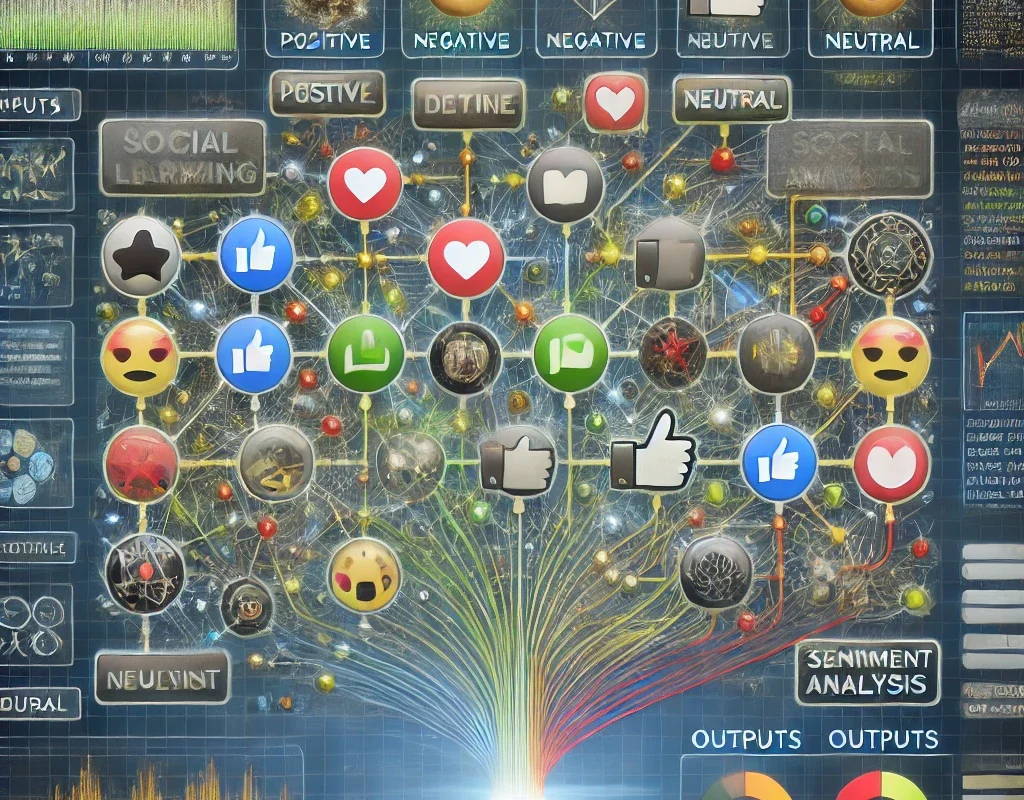Social media platforms have evolved into powerful spaces where millions of people express their opinions, feelings, and emotions. Brands, marketers, and researchers are increasingly using machine learning for sentiment analysis in social media to gain insights into public opinion. This article explores how machine learning can be harnessed for sentiment analysis, offering practical techniques, models, and strategies to understand user sentiments more effectively.
Understanding Sentiment Analysis in Social Media
Sentiment analysis refers to the computational process of identifying and categorizing emotions expressed in text. It helps determine whether the sentiment of a particular piece of content is positive, negative, or neutral. Social media platforms, such as Twitter, Facebook, and Instagram, are treasure troves of textual data that can reveal customer satisfaction, public opinion on events, or feedback on products and services.
By using machine learning, we can automate the process of extracting these sentiments from massive datasets, making it possible to analyze thousands of posts in a short time frame. This offers businesses the chance to monitor brand reputation, engage with their customers, and make informed decisions based on real-time social sentiment.
The Importance of Machine Learning for Sentiment Analysis in Social Media
Machine learning allows for sophisticated sentiment analysis models that can interpret nuances in language, such as sarcasm, slang, and cultural context. In traditional rule-based approaches, sentiment was determined through pre-defined dictionaries of words associated with positive or negative emotions. However, this method falls short in capturing the complexity of human language.
By training machine learning models on large datasets of labeled text, these algorithms can learn patterns, adapt to different contexts, and improve over time. This makes machine learning-driven sentiment analysis far more accurate and versatile than traditional methods. Furthermore, these models can scale to analyze huge volumes of social media posts across multiple platforms.
Common Challenges in Social Media Sentiment Analysis
Before diving into the machine learning techniques used for sentiment analysis, it’s important to address the challenges that come with analyzing social media data:
- Noise and irrelevant data: Social media is filled with emojis, abbreviations, and casual language that may not always be relevant to the analysis.
- Sarcasm and irony: Identifying sarcasm and irony in text is difficult for machines, often resulting in incorrect sentiment classification.
- Multilingual content: Social media is used globally, with posts often written in various languages and dialects, which complicates analysis.
- Mixed sentiments: A single post may express multiple emotions, making it hard to classify as strictly positive, negative, or neutral.
Despite these challenges, advancements in machine learning techniques have made it possible to overcome many of these issues, leading to more accurate sentiment analysis.
Steps to Implement Machine Learning for Sentiment Analysis
To leverage machine learning for sentiment analysis in social media, follow these essential steps:
1. Data Collection
The first step in any machine learning project is gathering relevant data. For sentiment analysis, this involves scraping or accessing social media posts through APIs provided by platforms like Twitter, Facebook, and Instagram. It’s important to collect a large and diverse dataset to ensure that the model can generalize across different types of social media content.
Data collection should also focus on including a balanced representation of positive, negative, and neutral sentiments to avoid bias in the final model. The more diverse the data, the better the model will perform in real-world applications.
2. Data Preprocessing
Once you’ve collected your social media data, it needs to be preprocessed to clean and standardize it for machine learning algorithms. This typically involves several steps:
- Text normalization: Converting all text to lowercase, removing punctuation, and expanding contractions (e.g., “don’t” to “do not”).
- Removing noise: Eliminating irrelevant elements such as emojis, special characters, and URLs.
- Tokenization: Splitting the text into individual words or tokens that can be processed by the model.
- Stopword removal: Filtering out common words like “and,” “is,” and “the” that do not contribute to the sentiment.
Data preprocessing ensures that the model focuses only on the relevant linguistic features when training.
3. Feature Extraction
Feature extraction is the process of converting raw text into numerical representations that machine learning algorithms can process. Several techniques are used in sentiment analysis for this purpose:
- Bag of Words (BoW): Represents text as a collection of individual words, disregarding grammar and word order.
- Term Frequency-Inverse Document Frequency (TF-IDF): Measures the importance of a word in a document relative to its occurrence in the entire dataset, highlighting the most relevant terms.
- Word Embeddings: Uses techniques like Word2Vec or GloVe to convert words into vectors, capturing semantic meaning and relationships between words.
Choosing the right feature extraction technique is critical for the success of the machine learning model.
4. Model Selection
Several machine learning models can be used for sentiment analysis, each with its strengths and weaknesses. Some common models include:
- Logistic Regression: A simple yet effective algorithm for binary classification tasks like sentiment analysis.
- Support Vector Machines (SVM): A popular choice for text classification that works well with high-dimensional data.
- Random Forest: An ensemble method that builds multiple decision trees and combines their outputs for more accurate predictions.
- Deep Learning Models: Techniques like Recurrent Neural Networks (RNN) and Long Short-Term Memory (LSTM) are especially useful for understanding the sequential nature of language and capturing context over long distances.
The choice of model depends on factors like dataset size, complexity of the language, and the need for real-time analysis.
5. Training and Testing
Once you’ve selected a model, the next step is to train it using your labeled dataset. During training, the model learns to identify patterns in the data that are associated with positive, negative, or neutral sentiments.
After training, the model should be tested on a separate dataset (test set) to evaluate its performance. Common metrics for evaluating sentiment analysis models include:
- Accuracy: The percentage of correctly classified instances.
- Precision: The number of true positive predictions relative to the total positive predictions.
- Recall: The number of true positive predictions relative to all actual positive instances.
- F1-score: A balance between precision and recall, offering a single measure of model performance.
6. Deployment and Continuous Improvement
Once your sentiment analysis model has been trained and tested, it can be deployed to monitor real-time social media sentiment. However, the process doesn’t stop there. Social media trends and language evolve, so continuous retraining of the model on fresh data is crucial to maintain accuracy.
Moreover, analyzing feedback and identifying patterns in the model’s misclassifications can help fine-tune the algorithm, improving performance over time.
You can also read; How to Perform Data Preprocessing for Better Machine Learning Results
Key Applications of Sentiment Analysis in Social Media
Sentiment analysis powered by machine learning has a wide array of applications across industries. Some of the most prominent uses include:
- Brand monitoring: Companies can track public sentiment toward their products, services, or overall brand image.
- Customer service: Analyzing customer feedback on social media helps businesses identify issues early and respond to customer concerns in real-time.
- Market research: Understanding public sentiment on social media offers insights into consumer preferences, helping companies tailor their marketing strategies.
- Political analysis: Sentiment analysis can be used to gauge public opinion during elections or major political events, helping predict outcomes and shape campaigns.
These applications highlight the importance of real-time sentiment analysis, providing businesses with actionable insights that can drive strategy and decision-making.



